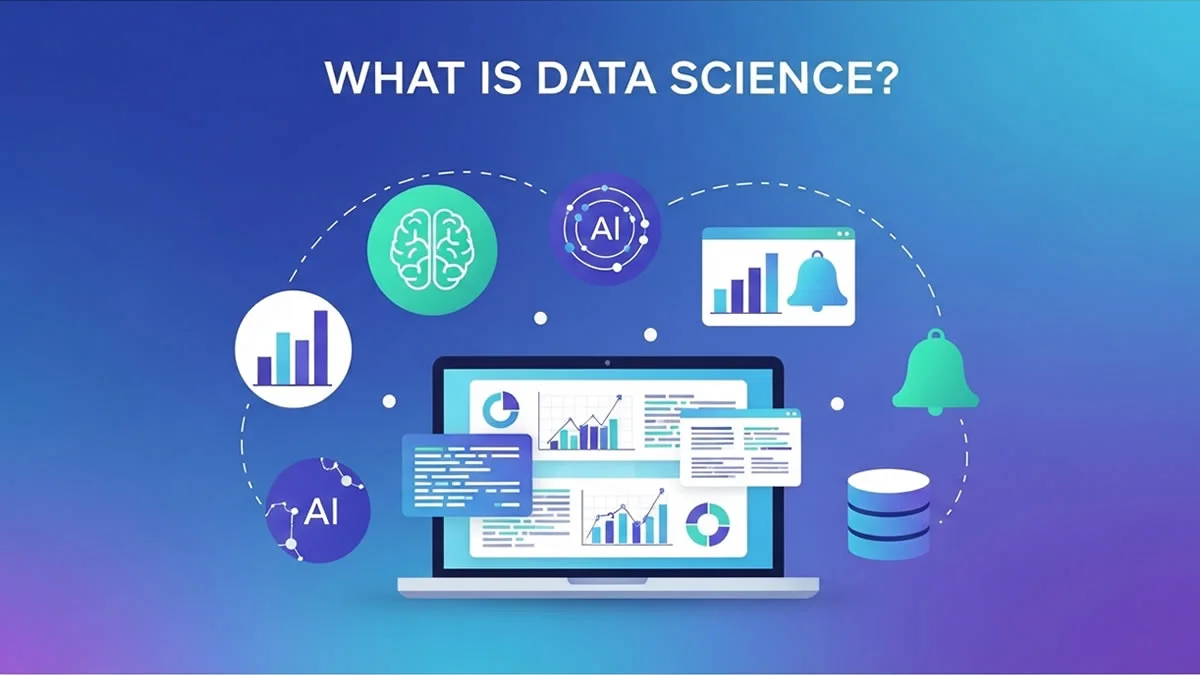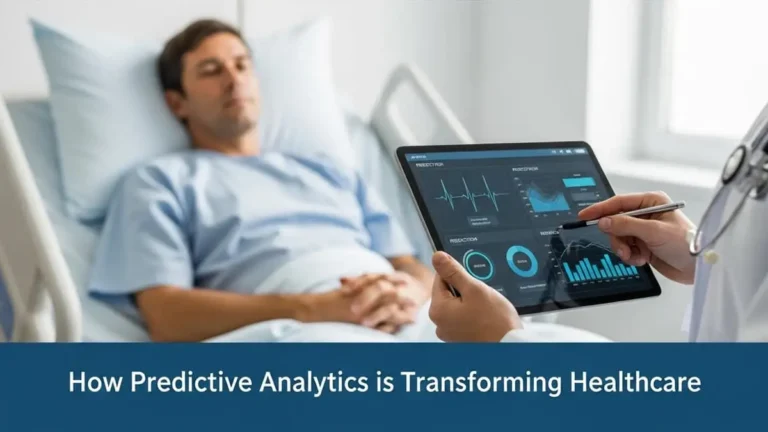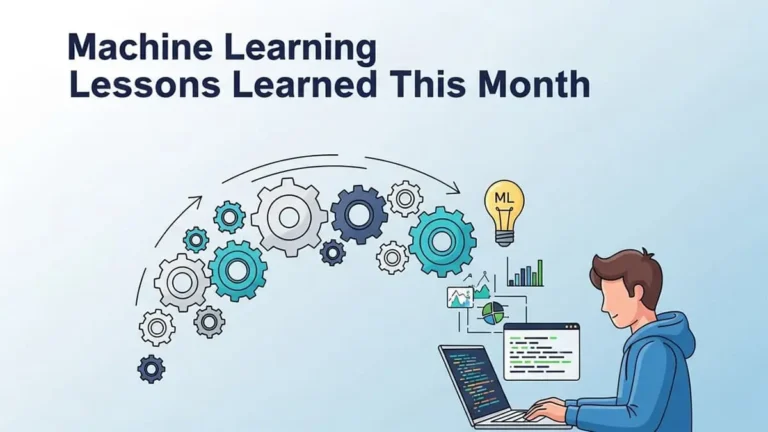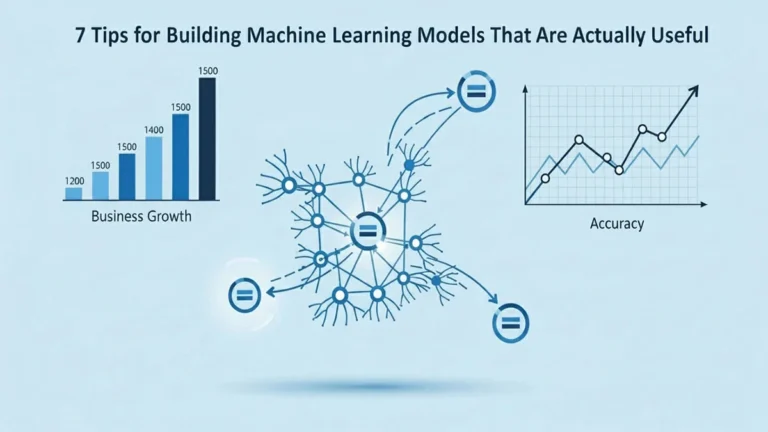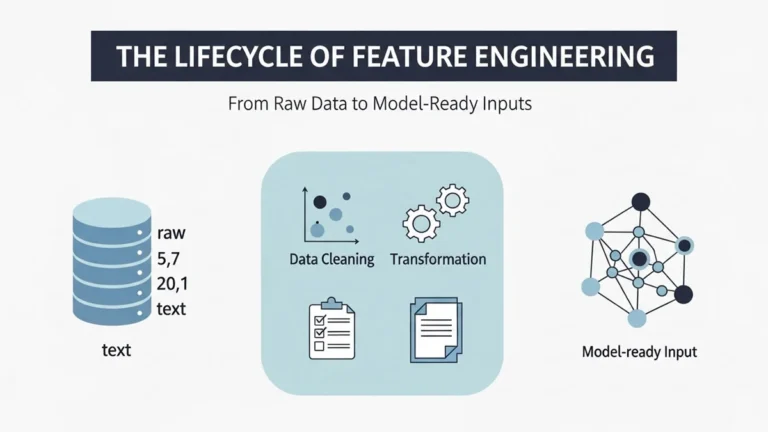What is Data Science in 2025 Simple Words?
“Data science,” “data scientist,” “data-oriented frameworks and practices,” and similar terms… Information surrounds us and has become a fundamental factor within every sector and enterprise, as well as in our daily existence.
However, with numerous data-related phrases and buzzwords, it is easy to feel overwhelmed and lose understanding of what each really signifies, especially one of the most comprehensive ideas: data science. This piece aims to clarify, in straightforward language, what data science is (and what it is not), the domains of knowledge it draws from, the routine processes involved, and the real-world impact it produces.
What is Data Science?
Data science is most effectively defined as a hybrid discipline that merges several knowledge domains (explained shortly). Its central aim is to exploit and utilize information to disclose patterns, resolve queries, and assist decisions, three essential components required in nearly all organizations and companies nowadays.
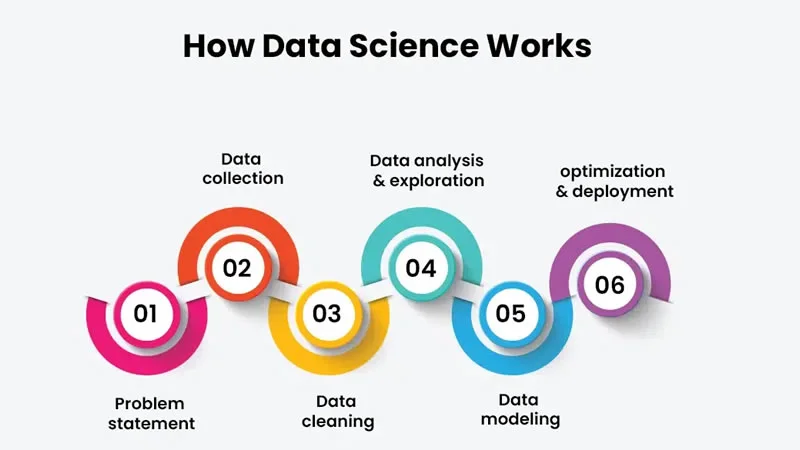
Consider a retail enterprise, as an illustration: data science may support them in recognizing top-selling items during particular seasons (patterns), clarify why specific clients migrate toward rivals (queries), and determine how much stock to hold for the following winter (decisions).
Since information is the primary asset in any data science activity, it becomes necessary to detect the appropriate data origins. In this retail scenario, such origins might include buying records, consumer interactions, and purchases, alongside sales figures across time.
So, which three primary domains, when integrated, create the full scope of data science?
- Mathematics and statistics, to assess, calculate, and interpret the fundamental characteristics of information.
- Computing science, to organize and manage vast datasets proficiently and effectively via software realizations of mathematical and statistical principles.
- Subject expertise, to facilitate the “practical-world adaptation” of applied processes, comprehend necessities, and utilize insights gained for the targeted application sector: business, medicine, athletics, etc.
Data science is a hybrid discipline that fuses diverse knowledge areas.
Real World Scope, Processes, and Impact
With numerous related disciplines, such as data examination, data visualization, analytics, and even artificial intelligence (AI), it becomes vital to clear up what data science truly is not. Data science is not restricted to gathering, archiving, and controlling data within repositories or carrying out shallow evaluations, nor is it a magical solution that instantly delivers answers without domain context and specialized understanding. It is also not equivalent to artificial intelligence nor its most data-linked subdivision: machine learning.
Although Artificial Intelligence and machine learning focus on building systems that emulate intelligence through studying from information, data science includes the complete process of acquiring, cleansing, exploring, and interpreting data to create insights and steer decisions. Therefore, in basic wording, the core of data science rehearses is to thoroughly examine and comprehend information to connect it with the practical challenge being considered.
These undertakings are often presented as part of a data science lifecycle: an organized, cyclic workflow usually advancing from recognizing the business problem to acquiring and arranging information, examining and modeling it, and ultimately launching and observing outcomes. This approach guarantees that data-oriented projects remain functional, consistent with real necessities, and continuously enhanced.
Data science influences real-world activities in companies and institutions through many pathways:
- Discovering patterns within intricate datasets, such as customer habits and choices across products.
- Enhancing functional and tactical decisions using insights drawn from information, to streamline operations, minimize expenses, etc.
- Anticipating future events or movements, e.g., forecasting market demand (the integration of machine learning strategies inside data science workflows is typical for this task).
- Tailoring client experience with products, materials, and services, adapting them to personal requirements or tastes.
To enlarge the outlook, below are some other examples from specific fields:
- Healthcare: Forecasting patient readmission likelihood, identifying illness outbreaks through public health records, or assisting medicine innovation by analyzing genetic data.
- Finance: Identifying fraudulent credit card operations instantly or constructing frameworks to evaluate loan risk and financial credibility.
Clarifying Related Roles
Beginners frequently encounter confusion when trying to differentiate among the numerous positions in the data environment. Even though data science remains broad, here’s a simplified overview of several highly common functions you’ll likely come across:
- Data Analyst: Emphasizes describing prior and current situations, typically through dashboards, reports, and descriptive statistics, to respond to business inquiries.
- Data Scientist: Concentrates on forecasting and deduction, commonly producing models and conducting experiments to anticipate forthcoming outcomes and uncover hidden patterns.
- Machine Learning Engineer: Focuses on converting the models developed by scientists into production-ready applications, guaranteeing they function reliably and at scale.
| Role | Main Focus | Core Tasks |
| Data Analyst | Explaining earlier and present | Designs reports and visualizations, applies descriptive statistics, and solves business issues with charts. |
| Data Scientist | Prediction and reasoning | Builds machine learning systems, tests with data, estimates later outcomes, and reveals unseen insights. |
| Machine Learning Engineer | Implementing and enlarging | Transforms models into real-world solutions, secures scalability and reliability, and checks performance over time. |
Recognizing these differences assists in cutting through the buzzwords and simplifying observing how all the components interconnect.
Tools of the Trade
So, how exactly do data scientists perform their tasks? An important element of the explanation is the toolkit they depend on for accomplishing their objectives.
Data specialists frequently utilize coding languages such as Python and R. Popular frameworks for Python (as one example) comprise:
- Pandas for manipulating information
- Matplotlib and Seaborn for building visualizations
- Scikit-learn or PyTorch for producing machine learning algorithms
These instruments reduce the entry barrier and enable rapid progress from raw information to actionable conclusions, without requiring attention to constructing personal utilities completely from the beginning.
Data specialists frequently utilize coding languages such as Python and R. If you want to go deeper into this area, you can check out our guide on 7 Python Statistics Tools That Every Data Scientist Should Know.
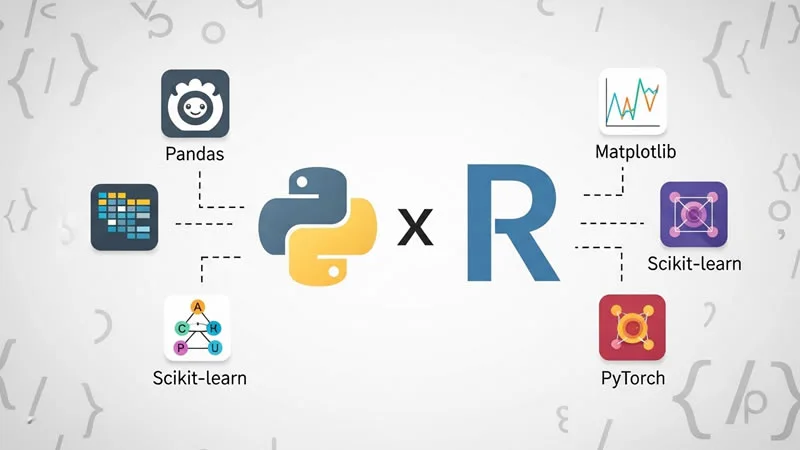
Conclusion
Data science is a multidisciplinary field that combines computing, mathematics, and sector-specific expertise to find patterns, respond to queries, and direct decisions. It is not like artificial intelligence or machine learning, though those frequently contribute. Instead, it represents the organized, hands-on application of information to address practical problems and produce a genuine-world impact.
Across retail, medicine, and finance, its uses are practically universal. Whether someone is just initiating their journey or clarifying the numerous buzzwords, comprehending the scope, activities, and positions within data science offers a solid preliminary foundation for this fascinating discipline.
I trust this gentle and concise introduction has been both useful and informative!

